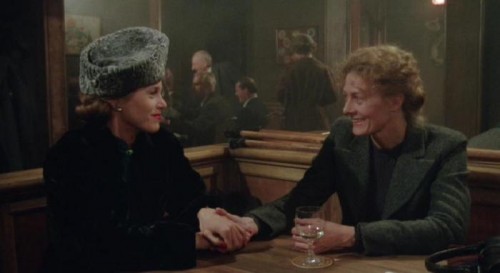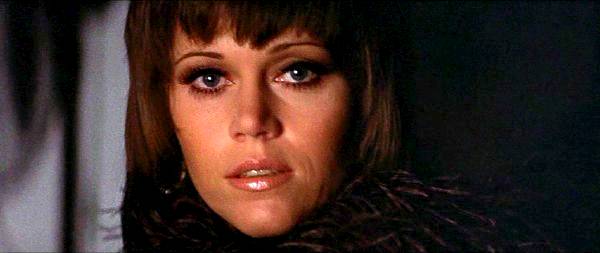
Written by Rachael Johnson.
On June 5, Jane Fonda received the American Film Institute’s Life Achievement award. She fully deserves the honor, of course. The two-time Oscar winner is, simply, one of the greatest American film actors of the last 50 years. There is a certain sincerity and intensity to Fonda’s acting and, as with all the finest stars, the camera never finds her boring. Her greatest performances, in They Shoot Horses, Don’t They? (1969), Klute (1971) and Coming Home (1978), are nothing less than master classes in the art of acting. Fonda has also led an interesting, eventful life. She has been an activist for decades, and her political interests have not infrequently been reflected in her choice of roles. An inspirational interpreter of American femininity on the screen, she has, moreover, championed feminist causes in both the United States and around the world.
Many of the films Fonda has appeared in address social and political issues while many of her roles have been culturally significant. The very early ones are, generally speaking, less interesting but in movies such as Barefoot in the Park (1967), Fonda’s vivacious protagonists are clearly intended to represent youthful 60s womanhood. Directed by her then husband, the late French filmmaker Roger Vadim, the wacky, erotic sci-fi Barbarella (1968) made her into one of the cinematic sex symbols of that decade. Her next role could not have been more different: in the dark, Depression-set drama, They Shoot Horses, Don’t They?, she plays a participant in a hellish dance competition. There is great depth and complexity to her character and Fonda won her first Oscar nomination for the part. The roles she began to play during this period revealed a growing socio-political awareness.
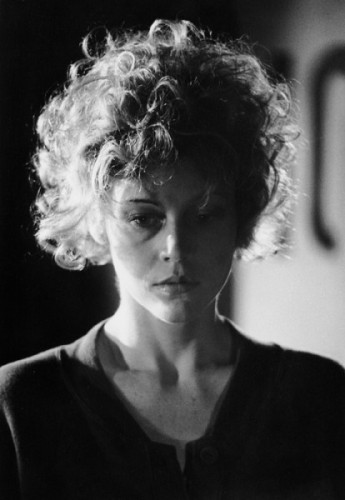
Fonda’s greatest, Academy Award-winning performance–to date–is in Klute (1971). As I noted in my article, “Female Identity and Performance,” Klute should not only be celebrated as a suspenseful psychological thriller about a sex worker and a detective but also as “an allegory of the female condition in patriarchy.” Alan Pakula’s film powerfully explores female sexuality and independence as well as violence against women and misogyny. Reflecting social change, Fonda portrayed independent professional women during the 70s and 80s. She played TV reporters in The China Syndrome (1979) and The Electric Horseman (1979) and a psychiatrist in Agnes of God (1985). Fonda also, of course, starred in 9 to 5 (1980), a lively, subversive revenge comedy that directly addressed sexism in the American workplace. Incarnations of real-life, historical figures have been rare but in Julia (1977), she played Lillian Hellman, one of the key American playwrights of the 20th century. In The Butler (2013), she portrayed former first lady, Nancy Reagan. As the former President’s politics contrast sharply with Fonda’s, the decision to play his partner is a somewhat amusing one.

Fonda has not only portrayed American femininity for decades; her off-screen feminist activism has also been widely acknowledged and appreciated. A supporter of the V-Day movement, the actor has actively championed anti-VAW initiatives around the world. She has also demonstrated an interest in women’s health. She founded the Georgia Campaign for Adolescent Pregnancy Prevention in 1995 and the Jane Fonda Center for Adolescent Reproductive Health at the Emory School of Medicine in 2002. A co-founder of the Women’s Media Center, the actor has, furthermore, shown a commitment to improving the status of women in the US media.
Fonda championed progressive political causes as a younger woman. In the late 60s and early 70s, she supported Native and Black American rights and campaigned against The Vietnam War. Fonda’s visit to Hanoi during the Vietnam War in 1972 was the subject of controversy and one incident in particular caused anger in the United States. A photo was taken of a gleeful-looking Fonda as she sat on a North Vietnamese antiaircraft gun site. In her autobiography, My Life So Far (2005), Fonda explains, for her part, that the act was spontaneous and not intentionally staged; she was singing a song with her hosts and sat down unwittingly at the site. There are, in fact, Vietnam vets today who have not forgiven Fonda for her Hanoi visit, particularly for the gun incident, and the actor remains a target for virulent right-wing abuse online. In fact, a certain right-wing US news source–you can guess which–reported anger by some veterans at Fonda receiving the AFI award. In her memoir, Fonda apologizes for the photo. She also states that the gun incident constituted a betrayal of her own involvement with the GI movement, explaining that it was the veterans themselves who exposed her to the horrors of the Vietnam War.

Right-wing obsession with the image, of course, not only indicated frankly racist indifference to the mass deaths of Vietnamese civilians but it also served to obscure the political and moral motivations for the trip as well as the infinitely greater transgression of the war itself. Fonda does not apologize for the trip in her memoir. She went to raise awareness in the United States of Nixon and Kissinger’s underhanded, escalated bombing of the country, particularly its dikes. Any reading of the historic response to her visit, particularly the gun incident, as well as lingering resentment, should also take into account the following truths: politically engaged women have traditionally endured greater scrutiny and judgment than their male counterparts while women who have been perceived as traitors have always been subject to more intense vilification. Fonda herself expresses an awareness of this in her memoir: “I realize that it is not just a US citizen laughing and clapping…I am Henry Fonda’s privileged daughter who appears to be thumbing my nose at the country that has provided me these privileges. More than that, I am a woman, which makes me sitting there even more of a betrayal. And I am a woman who is seen as Barbarella…an embodiment of men’s fantasies.”
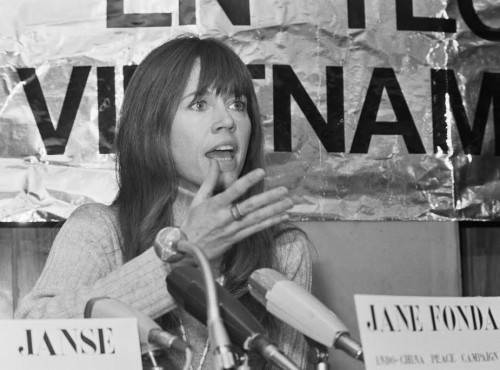
Again, many of the movie projects she was involved in during the era addressed her political concerns. One, in fact, tackled the war in Vietnam. Conceived and developed by Fonda herself, Coming Home is the story of a wife of a Marine Corps captain who has an affair with a paraplegic vet when her husband is in Vietnam. An intimate, political take on the conflict, the drama addresses its life-changing consequences. It not only examines war-related disabilities and PTSD but also looks at its impact on women with partners in the military.
The China Syndrome (1979), a thriller about a cover-up in a nuclear plant, reflected Fonda’s concern with the dangers of nuclear energy. The credibility and urgency of the movie’s message was amplified by a real-life incident at the time of its release in 1979: astonishingly, the Three Mile Island accident in Pennsylvania, effectively a limited nuclear meltdown, occurred less than a fortnight after the opening of the film. Other films Fonda appeared in during this period critiqued materialism. The romance The Electric Horseman (1979) espouses an anti-corporate ethos while Fun With Dick and Jane (1977) takes aim at the American Dream. Although set in a much earlier era, the anti-Fascist Julia examines the nature of courage and political engagement.

Fonda has played a great many parts in her own life. She has, of course, been a fitness and health guru–as aspect of her life that, I must admit, interests me the least–as well as a memoir writer. Fonda’s private life has been equally been eventful. She has been married to three charismatic men–the politician Tom Hayden, media mogul Ted Turner, as well as Roger Vadim–has three children, and is currently in a relationship with music producer, Richard Perry. It is difficult to think of another American movie star who has had such an accomplished, interesting and influential life but Fonda’s deeply confessional autobiography is a candid account of female insecurity and self-abuse. My Life So Far chronicles the experiences of a privileged though objectified woman in a patriarchal society and details the psychological damage that sexist attitudes inflict upon women. It is shocking to read director Joshua Logan’s suggestion that Fonda procure a more defined look by having her jaw broken and reset. Another troubling aspect of her memoir is her account of her relationship with her father. Jane adored Henry though he was a cold and distant parent. On Golden Pond (1981), a drama about a troubled father-daughter relationship, was a gift to Henry from his daughter–Jane produced and starred in the film with him and he won a Best Actor Oscar for it–but you wonder whether he deserved her love. It is, to be frank, a love that comes across as emotionally slavish father worship. Fonda also, it seems, had troubles with the men in her life in the past, including sexual betrayal. My Life So Far may be read as an act of female strength in that it opposes traditional patriarchal attitudes towards weakness but it is also a quite a perplexing and dispiriting affair. As a feminist icon, should Fonda not be highlighting her work more? Tough yet vulnerable, independent yet emotionally dependent, the younger Fonda arguably embodied the contradictions of middle 20th century womanhood.
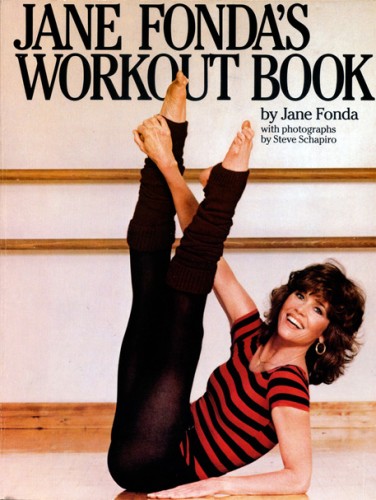
Fonda retired from acting in the early 90s but returned in 2005. The films have not been remarkable but it’s great to see her grace both the big and small screen. Her role as CEO Leona Lansing in the TV series, The Newsroom, is strikingly played but we are left wanting more. The good news is that she will star with Lilly Tomlin in a Netflix comedy. It would also be a wonderful thing to see another great central cinematic performance from Fonda but even if it does not happen–through preference for smaller parts or opportunity–the great roles of her prime will continue to stand the test of time.
Few figures in American popular culture have played such a dynamic public role as Fonda. Whatever your opinion of her politics or fitness/health projects, it is difficult to disregard her passion and commitment. Fonda was at the very epicenter of social and political change in America for many years. The 76-year-old has shown creativity and daring in both her career and activism and she should be celebrated not only for her great performances but also for her personal courage and resilience. Jane Fonda is an American icon and survivor.
